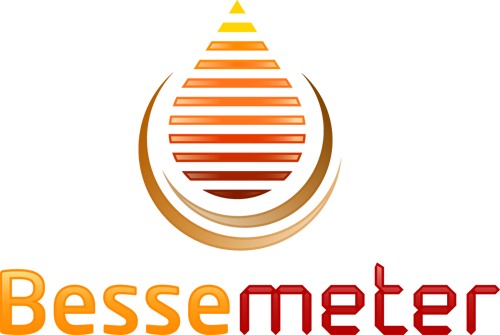What You Should Know Before Buying Wood
Buying lumber can be a complicated process. How do you know which kind to buy? How much? Do you need to bring tools? And what do those stamps on the wood mean?
It can be a bit bewildering to walk into a hardware store or lumberyard for the first—or even second—time.
In this article, we’ll explain all of the facets to buying wood, plus show the difference between the types and species of lumber. We’ll cover:
- How to prepare for the buying process
- Things to look for when purchasing wood
- Tools you should bring when purchasing wood
Let’s start things off by seeing how you can get ready for your trip to the store.
How to prepare for the buying process
 When you’re getting ready to start a woodworking project, one of the most important things to consider is what species of wood will best fit the bill. You’ll have to consider many factors, such as the hardness of the wood, grain patterns, knots, expense, and weather resistance.
When you’re getting ready to start a woodworking project, one of the most important things to consider is what species of wood will best fit the bill. You’ll have to consider many factors, such as the hardness of the wood, grain patterns, knots, expense, and weather resistance.
Let’s start with the different species of lumber.
Kinds of wood
There are three types of wood: hardwood, softwood, and exotic wood, which can fall under hardwood or softwood.
Hardwood comes from deciduous trees, including:
- Oak
- Beech
- Hickory
- Maple
- Cherry
- Alder
- Walnut
Hardwood tends to be harder than softwood, hence the name. It’s generally a better choice when it comes to making furniture because it doesn’t dent as easily as softwood.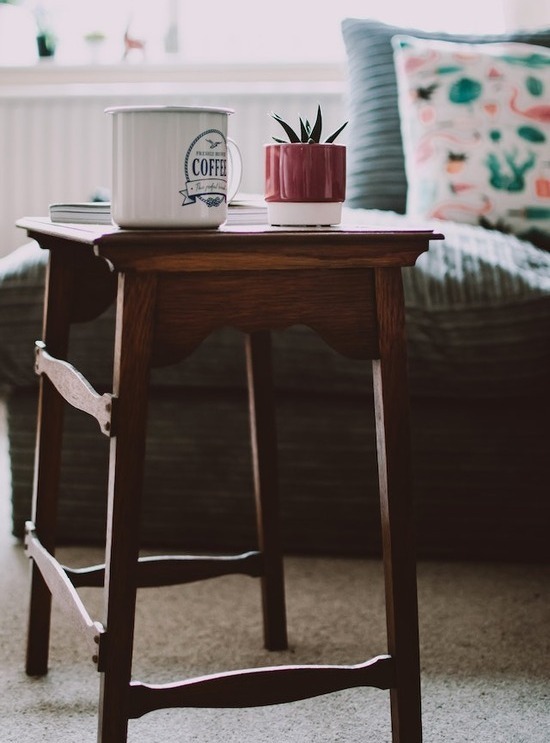
However, there are a few hardwoods that are actually softer than most softwoods. Alder would be a prime example. Before you decide on a wood, it’s still best to research the wood you want to use, even if it may be lumped in with one category or another.
Softwoods, on the other hand, come from coniferous trees. They tend to be lighter weight and easier to work with than hardwoods, making them more suited for construction projects, such as framing. Examples of softwoods include
- Pine
- Fir
- Cedar
- Redwood
- Tamarack
Exotic wood is just that: non-native wood that might be desirable for color, durability, or strength. Because they are exotic, they may fall under either the hardwood or softwood category, depending on the species. Here are some examples of exotic wood:
- Teak
- Bamboo (even though it’s technically a grass)
- Zebrawood
- Bolivian Rosewood
- Purpleheart
As far as pricing goes, softwood tends to run the least expensive, while hardwood is more expensive. Exotic wood is generally quite pricey; though, depending on the wood it could be about the same as some common hardwoods.
The type of wood you choose is about the most important factor, but once you have in mind what you want to use, it’s also beneficial to know what grade fits your project.
Wood grades
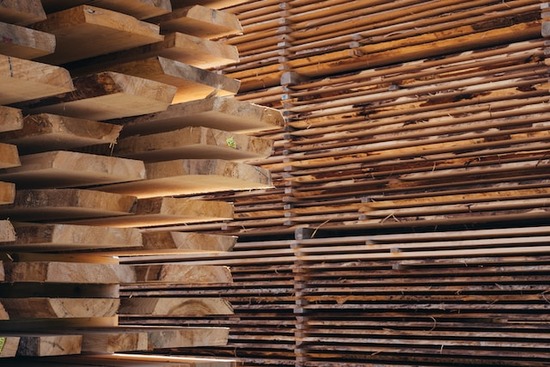 Just like many other things, wood gets “graded.” This means any given board gets ranked (by expense) for different features it contains. These features could be appearance or stress (how well it holds up under weight).
Just like many other things, wood gets “graded.” This means any given board gets ranked (by expense) for different features it contains. These features could be appearance or stress (how well it holds up under weight).
Softwood, because of its wide array of uses, has a complex grading system. The system used is dependent on the function of the lumber. For instance, if a piece of softwood is being used as a beam in a building, it could be classified in many different grades, like Select structural, No. 1, No. 2, No. 3, stud, or something else.
You may not see these grades listed for softwoods at big box home improvement stores, such as Lowes or Home Depot. But specialty stores may list it. A good rule of thumb is, the more expensive the lumber, the better quality it is.
Hardwoods, on the other hand, have a fairly simple grading system. They are ranked by quality.
- Firsts. This is the cream of the crop. There will be very few blemishes, if any, in this wood. It will also be the most expensive.
- Seconds. These specimens are still extremely nice, with only insignificant knots or surface defects. Knots are circular parts in the wood where a branch once was. (Note that Firsts and Seconds are generally combined as the single FAS. FAS is the best grade for furniture.)
- Select. One step down from FAS, select boards will contain several minor defects, but these can be cut or worked around.
- Common. This type of wood is the bottom of the barrel, so to speak. It will probably contain several knots, some cracking, or other more major defects. It’s also the lowest priced. While not recommended for furniture, common boards can still be used in a variety of projects. It has two subcategories:
a. No. 1 Common—cabinet grade wood
b. No. 2 Common—economy grade wood, suitable for flooring or furniture parts
Based on these grades, you might be wondering how you could possibly know which grade is best for your project. As mentioned, there are some grades better suited to different projects, but if you’re new to woodworking, it’s best to start with a low-grade lumber, no matter what you’re building. Inevitably, you’ll make some mistakes, and cheaper lumber will be more forgiving on your pocketbook than the top pick.
Types of lumber
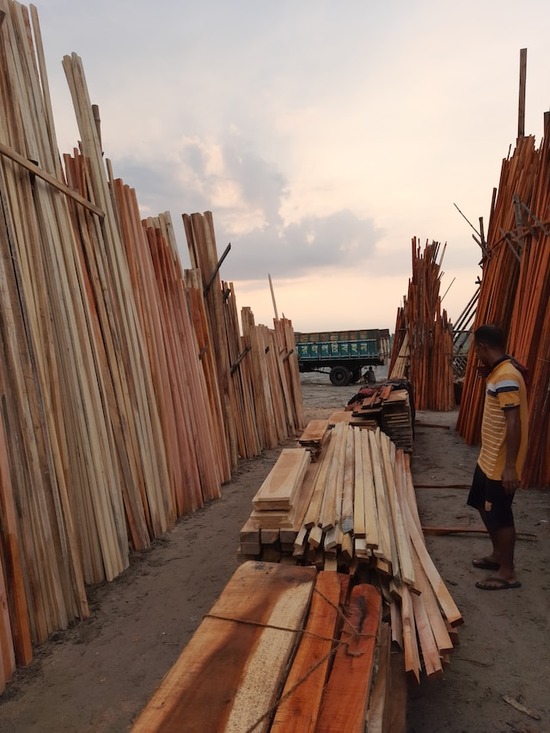 When you walk into a lumberyard or a hardware store, you’ll likely be greeted by a huge array of lumber, of every size and shape imaginable.
When you walk into a lumberyard or a hardware store, you’ll likely be greeted by a huge array of lumber, of every size and shape imaginable.
Let’s break down some of the main types of lumber you’ll find to ease your decision-making process.
Furring strips
The cheapest lumber out there, furring strips are not exactly known for their quality. They are often rough, warped, or damaged. Their appearance doesn’t matter so much, though, because they were not designed to be visible.
Furring strips were created to serve as spacers, whether to raise things or level things. These, naturally, would be covered up in the final project.
They’ll probably require a lot of sanding before use, but furring strips can be used to make amazing projects. Not to mention, it’s a very budget-friendly choice in lumber.
Studs/framing lumber
Like furring strips, framing lumber is also very economical. Framing lumber is not typically seen in the finished product, either, so it can be rough and not very pretty. It’s made from softwood.
As the name suggests, they were designed to be used as studs or other framing pieces in buildings.
Common boards
One step up from framing lumber, common boards are still inexpensive and made from softwood. They come in sizes, beginning with 1×4 and moving up in increments.
These boards are good for beginner woodworkers because they’re not expensive. Not to mention, they’re a lot nicer than furring strips.
Select
While still made of softwood, this wood is the best of the best. It’s generally pretty straight and contains few blemishes.
Hardwood
This is the most expensive wood, generally speaking. It’s sold by the linear foot, which can really add up. Because it’s so expensive, it’s not recommended for beginners.
However, if you’re still wanting to do a hardwood project as a beginner, poplar and alder are more inexpensive species.
Pressure-treated lumber
This wood is different from other woods because chemicals are forced into it. These chemicals help the wood resist rot, fungus, and decay.
This treatment makes pressure-treated lumber an excellent choice for outdoor projects, where it will face the elements 24/7.
While pressure treated lumber costs more than untreated lumber, it’s less expensive than some naturally rot-resistant woods, like cedar or redwood.
Plywood
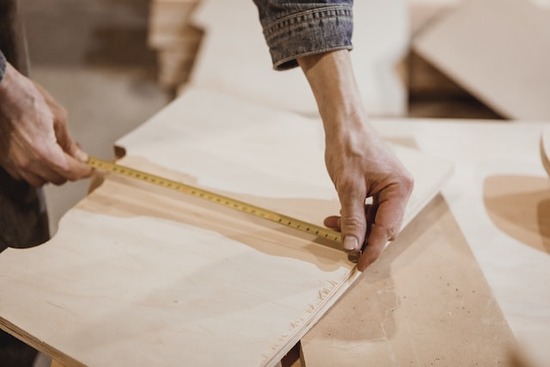 Plywood is a different type of wood altogether. It is can be made of a couple woods: many times a thin layer of hardwood glued to a thin layer of wood beneath. It is strong, but looks nice on the top.
Plywood is a different type of wood altogether. It is can be made of a couple woods: many times a thin layer of hardwood glued to a thin layer of wood beneath. It is strong, but looks nice on the top.
Generally, it’s sold by the thickness, though sometimes by nominal measurements. It can also be a little pricey, depending on the kind you buy.
Particle board
Like the name suggests, particle boards are composite. Little bits of sawdust and wood are glued together to make it. It’s not the strongest, as it will bend under heavy weight, and possibly even break. It also crumbles in water.
You might see particle board used a lot in shelving units and other similar items. It’s fairly inexpensive, but not suited for many projects.
Wood cuts
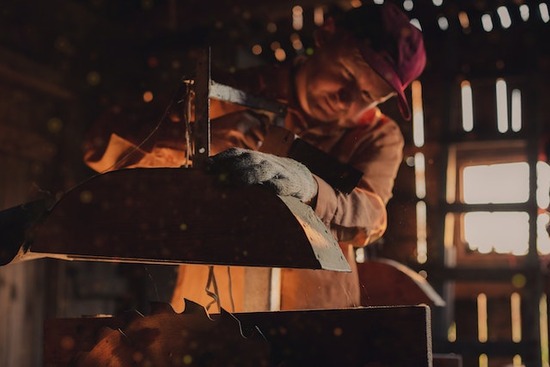 Something else to keep in mind when you’re purchasing your lumber is the wood cut. This is the way the lumber was sawn from the original piece of timber.
Something else to keep in mind when you’re purchasing your lumber is the wood cut. This is the way the lumber was sawn from the original piece of timber.
There are three main wood cuts to be aware of:
- Plain sawn/flat sawn. This is the most common type of wood at the lumberyard. It’s made by sawing straight across the log, from top to bottom. This method also wastes the least amount of wood. The resulting grain face has the beautiful “cathedral” look.
- Rift sawn. This method produces a more sturdy—and expensive—board than plain sawn. It’s cut from an angle in the log, so that the growth rings will be between a 30 and 60 degree angle. The face grain pattern is straight.
- Quarter sawn. This is the most sturdy and expensive wood. Typically, it’s only available in some species. Quarter sawn wood is cut from the center of the log out in a diagonal “x” pattern. The growth rings could be perpendicular to the wood (90 degrees). On the grain face, you’ll see a flaky or ribbon pattern.
There are many things to know before you go purchase wood for your project, but there are also a lot of things to know when you’re at the store looking to buy.
Things to look for when purchasing wood
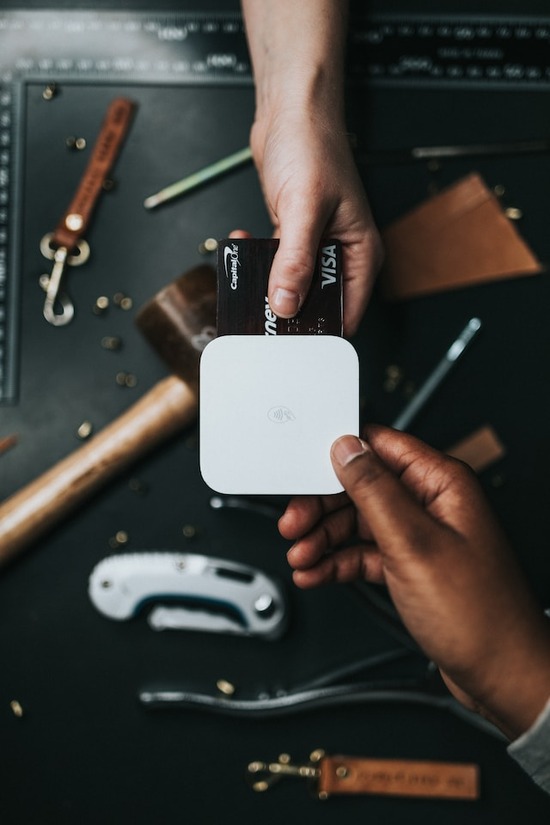 At the store, whether it’s Home Depot or a lumberyard, don’t be afraid to closely examine each piece of wood you’re interested in buying. There are a few things you want to check for to make sure you’re getting what you pay for.
At the store, whether it’s Home Depot or a lumberyard, don’t be afraid to closely examine each piece of wood you’re interested in buying. There are a few things you want to check for to make sure you’re getting what you pay for.
First, examine the board itself. Does it match the description? Does it have any glaring defects? This is where you could also look for a stamp on the wood.
Having wood stamped gives you a lot of details all at once. Not all wood may be stamped, but if yours happens to be, take a minute to examine it.
Lumber stamps
Most stamps will have a number of elements to them, including:
- Mill and mill number
- Species
- Certification marks
- Grade
- Seasoning
The mill and mill number will likely be a name and/or a number, designating the specific location. These numbers can be looked up.
The species will be denoted by an abbreviation of letters. Sometimes it will appear inside a triangle, sometimes not. These are a few common species abbreviations:
- D-FIR (Douglas Fir) or DF-L (Douglas Fir and Western Larch)
- S-P-F (Spruce-Pine-Fir, in general referring to Eastern softwoods)
- Hem-Fir (Western Hemlock and true Firs)
Certification marks are another part of lumber stamps. A common one is WWPA (Western Wood Products Association), but these are some others:
- RIS (Redwood Inspection Service)
- SPIB (Southern Pine Inspection Bureau)
- NHPMA (Northern Hardwood and Pine Manufacturers’ Association)
- WCLB (West Coast Lumber Inspection Bureau)
Along with certification marks, you’ll also have the lumber grade. This could be a wide range of number and letter combinations—since there are a wide range of grades! Here are a few you may see:
- 1 & BTR (1 and better, meaning #1 Structural)
- STUD (#3 Structural, stud grade)
- STAND & BTR (standard and better, meaning Standard Grade)
Lastly, you’ll see a mark for the seasoning of the wood, or how long and to what moisture content it’s been dried. You’ll see one of these three stamps:
- S-DRY (surface dried, indicating a moisture content of less than 19%)
- S-GRN (over 19% moisture content; not seasoned)
- MC15 (moisture content is below 15%)
You could also see KD-HT, which means the wood was kiln dried and heated to kill off infestatious bugs. This is a common rating for imported wood.
Besides checking the stamp, you’ll want to examine the wood itself.
Wood defects
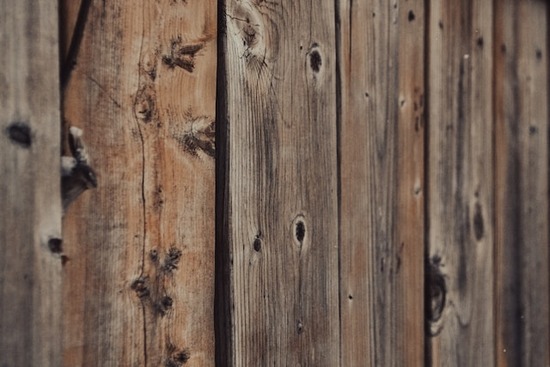 Lumber can have all sorts of problems, generally stemming from moisture being absorbed or released. This could potentially lead to a nightmare down the road. Common defects are
Lumber can have all sorts of problems, generally stemming from moisture being absorbed or released. This could potentially lead to a nightmare down the road. Common defects are
- Cupping. The short ends of the wood curve up so that the wood won’t lay properly.
- Bowing. Here, the wood curves up at both ends, so that neither touch the ground when you lay it flat.
- Twisting. When a board twists, it bends different ways, giving it a shape that’s not uniform and not straight.
- Checking. Cracks occur along growth rings in checking. They probably don’t extend the length of the board, but it may cause the board to not lay flat.
- Crowning or Crooking. Here, the wood is bent from one end to the other on the tall side. While improper drying is usually the reason, proximity of the wood’s pith can also be the culprit.
- Knots. Little knots are alright, though they can be hard to work around. But big or loose knots are liable to fall out, creating holes in your board and reducing its strength.
- Waning. Just like a moon gets smaller as it wanes, so does a board with this problem. Pieces of bark might be present, or corners could be missing from the wood. Only lower grade lumber will have this problem.
- Insect infestation. Evidence of this will be little holes or tube-like patterns in the wood.
These defects will all be proportionate to the grade of lumber you are looking to purchase, of course. Whatever grade you’re looking for, look for ones with the least amount of defects. As much as is possible, try to find straight boards that aren’t cracked or showing signs of insect hitch hikers.
To test if your boards pass muster, take them out and lean one end on the ground. Bring the other end up to your eye where you can see all the way down the length of the board. Now, you can tell if the board is warped or twisted in any way.
Besides taking a good look at the wood, there are a couple tools that might be useful to bring along when you buy it.
Tools you should bring when purchasing wood
There are several tools you’ll want to bring, including:
- A tape measure
- A spray bottle
- A calculator
- A moisture meter
Tape measure
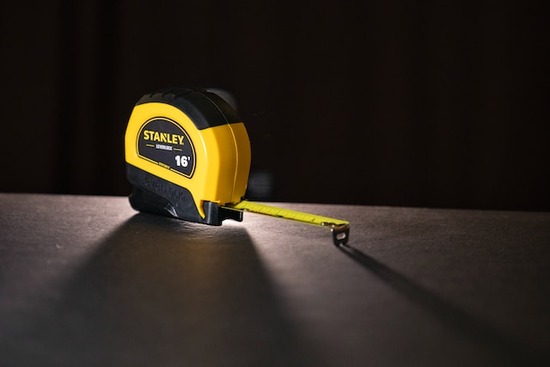 You might be wondering why a tape measure is necessary when the tag will already tell you the size of the wood.
You might be wondering why a tape measure is necessary when the tag will already tell you the size of the wood.
This is because wood is measured in nominal sizes and actual sizes.
A nominal measurement is something like a 2×4. This was the size of the wood when it was cut green. Before it comes to the store, it will do some drying and shrink, plus probably go through a planer, and you’ll end up with the actual measurement, which will come closer to something like 1.5 x 3.5.
This is something to keep in mind as you’re purchasing wood.
Another reason a tape measure is good to bring is because different wood is sold in different ways: dimensional wood and board foot.
Dimensional wood is sold the way we were just discussing— 2×4, 2×6, etc. Softwood used for framing and other jobs is more likely to be sold this way.
Then there’s board feet. Board feet is not a specified size—rather, it’s a calculation based on the volume of a piece of wood.
The volume of any square shape is width x length x height. In the case of board foot, the number of board feet is calculated by width (inches) x length (inches) x thickness (inches) / 144.
For example, say you have a board that measures 3 ½ x 96 x 1 ½ (a standard 2 x 4). Multiply those numbers and divide it by 144 and the result is 3.5 board feet. If the price is $8 per board foot, you would be paying $28 for that piece of wood.
While this is the calculation of a 2 x 4, most wood sold in board feet is hardwood, not softwood.
Spray bottle
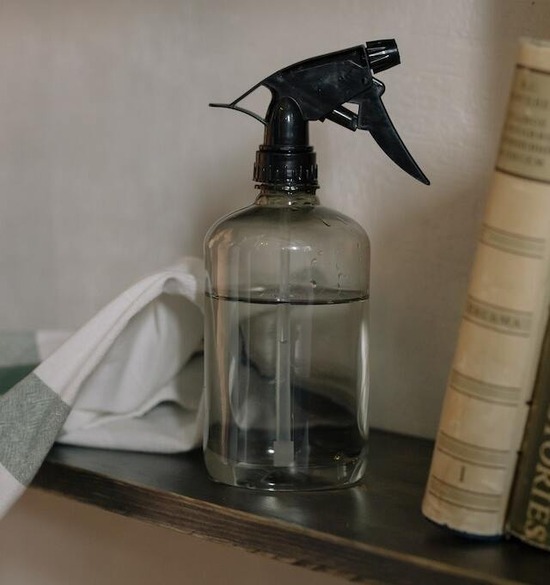 A spray bottle could be a good thing if you’re purchasing rough cut lumber. Usually places selling it give the wood a quick plane or sanding to bring out the grain. This could hide the color a bit, though.
A spray bottle could be a good thing if you’re purchasing rough cut lumber. Usually places selling it give the wood a quick plane or sanding to bring out the grain. This could hide the color a bit, though.
Here’s where the spray bottle comes in. A little spritz or two can really help bring out the actual color of the wood.
While this could be necessary to bring to a place where rough-cut lumber is sold, it probably isn’t needed at a hardware store, where most of the wood has been seasoned and treated already.
Calculator
As we saw, calculating board feet is a little complex. When you go to the store, bringing a calculator will make the numbers easy to keep track of as you decide the amounts of wood you need.
A calculator is not just useful for determining board feet. You might need to take some measurements for your project that require calculations at the store.
Even if you don’t think you’ll need it, a calculator is a good thing to bring along just in case.
Moisture meter
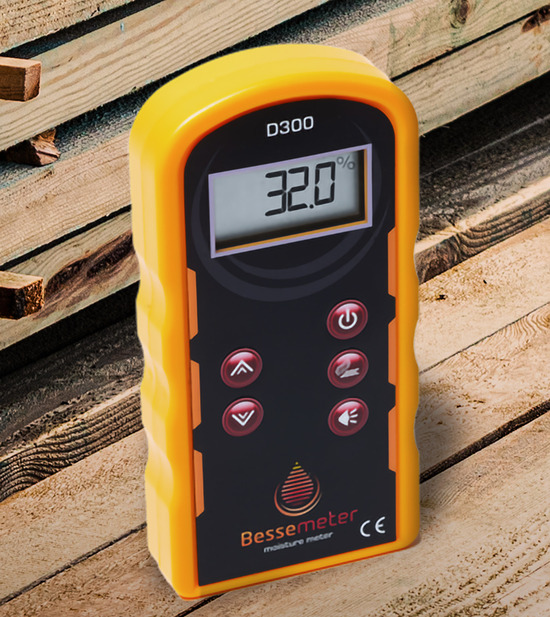 We went over how to check the lumber stamp to determine how the lumber was seasoned and roughly what percentage it was dried to.
We went over how to check the lumber stamp to determine how the lumber was seasoned and roughly what percentage it was dried to.
But since that lumber was stamped, its moisture content may have changed. This, and knowing the moisture percentage you need the wood to be at for your project, makes a moisture meter an indispensable tool to bring along.
Knowing the moisture content is vital for your projects. If wood doesn’t have an acceptable moisture content, it could swell or shrink and crack, ruining a beautiful project. Many defects in lumber are caused by a change in the moisture content.
For most projects that will be used indoors depending on the location, wood should have a moisture content between 9 and 14%. Wood flooring should be even drier, at 6–9%. Outdoor projects have a little more leeway—they’re alright under 20%. Of course, you’ll also want to get the EMC (equilibrium moisture content) for your area.
However, you won’t know the moisture content of the lumber if you don’t have a moisture meter. We provide a variety of the most accurate moisture meters to give you precise measurements on your lumber. With one of our moisture meters, you can be sure that you’ll leave the store knowing exactly how much moisture your wood has and whether it’s right for your project.
